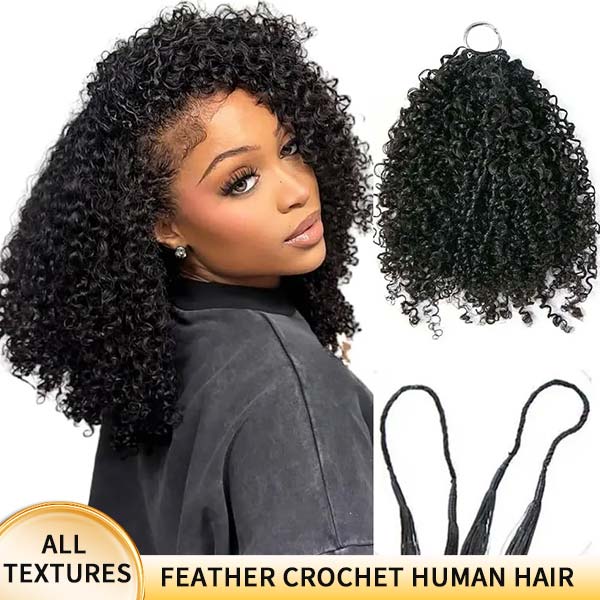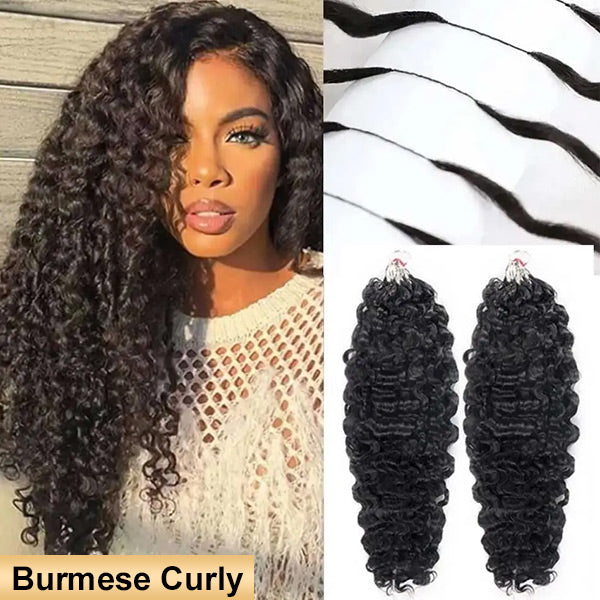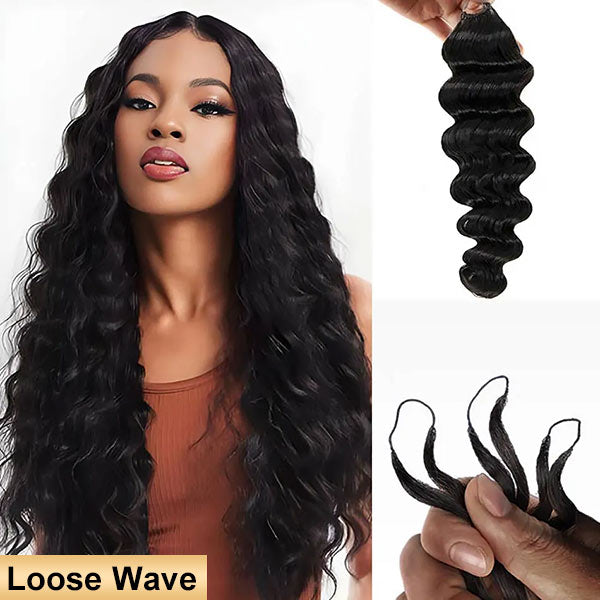Braids come in many styles, and two popular ones are cornrows and Dutch braids. Cornrows are tight, flat braids that lie close to the scalp, while Dutch braids, also known as reverse French braids, stand out from the scalp and create a 3D effect.
This article will help you understand the key differences and similarities between these two styles. Whether you're thinking about trying them or just want to learn more, we’ll break down what makes each braid unique and how to choose the right one for you.

What are Cornrows?
Cornrows are a traditional braiding style where the hair is braided very close to the scalp in a continuous, raised row. This technique has deep cultural roots, originating from Africa, where it has been practiced for thousands of years. Cornrows were used to signify social status, tribal affiliation, and personal achievements, and they continue to hold significant cultural value today.
Popular Styles and Variations of Cornrows
Cornrows come in various styles and patterns, each with its unique look. Some popular cornrow styles include:
- Straight Back Cornrows: Simple and classic, these cornrows run straight from the front to the back of the head.
- Feed-In Cornrows: These braids gradually incorporate added hair to create a smooth, natural look.
- Goddess Cornrows: Characterized by thicker braids with curled ends for a more elaborate appearance.
- Tribal Cornrows: Featuring complex patterns and designs, often with multiple braid directions and parts.

How to Create Cornrows: Step-by-Step Guide
Step 1: Prepare Your Hair:
Start with clean, detangled hair. Apply a leave-in conditioner or oil to keep your hair moisturized and manageable.
Step 2: Section Your Hair:
Divide your hair into sections using a comb. For uniform cornrows, use small, even sections. Secure each section with clips or hair ties.
Step 3: Begin Braiding:
Take a small section of hair from the front, divide it into three equal parts, and start braiding. As you braid, add more hair from the sides into the braid to ensure it stays close to the scalp.
Step 4: Continue Braiding:
Keep braiding the hair in a straight line, adding more hair as you go. Maintain tension for neat, tight braids.
Step 5: Finish the Braid: When you reach the end of the section, secure the braid with a small elastic band. Repeat the process for each section.
Step 6: Maintain Your Braids:
To keep cornrows looking fresh, moisturize your scalp and avoid excessive manipulation. Clean and condition your braids as needed.
With practice, creating cornrows becomes easier, and you can experiment with different patterns and styles to suit your taste.
What Are Dutch Braids?
Dutch braids, also known as reverse French braids, are a type of braid where the hair is braided under, rather than over, the strands. This technique creates a raised, 3D effect that stands out from the scalp. The style is thought to have evolved from traditional French braiding methods and gained popularity for its distinct, eye-catching appearance. Dutch braids have become a favorite for their versatility and the added texture they provide.

Common Styles and Variations of Dutch Braids
Dutch braids can be styled in various ways to suit different looks and occasions:
- Classic Dutch Braids: Two Dutch braids on either side of the head, running from the hairline to the nape of the neck.
- Dutch Fishtail Braids: A combination of Dutch braids and fishtail braids, adding an intricate texture and unique twist.
- Dutch Braided Crown: Dutch braids wrapped around the head create a crown-like effect, which is ideal for special occasions.
- Dutch Braid Ponytail: Dutch braids combined with a ponytail for a sporty and practical style.
How to Create Dutch Braids: Step-by-Step Guide
Step 1: Prepare Your Hair:
Start with clean, detangled hair. Apply a light styling product or mousse to add texture and hold.
Step 2: Section Your Hair:
Divide your hair into sections based on the style you want to create. For classic Dutch braids, separate the hair into two even sections. Secure each section with clips or hair ties.
Step 3: Start Braiding:
Take a small section of hair from the front of one side, divide it into three equal parts. Begin braiding by crossing the right and left sections under the middle section.
Step 4: Add Hair as You Go:
As you braid, add small sections of hair from the sides to each strand before crossing it under. Continue adding hair as you braid down to keep the braid close to the scalp.
Step 5: Finish the Braid:
When you reach the end of the section, secure the braid with a small elastic band. Repeat the process on the other side if creating two braids, or continue down the length of the braid if styling a single Dutch braid.
Step 6: Style and Maintain:
Adjust the braid to ensure it’s neat and secure. For added volume, gently pull on the braid to loosen it slightly. To maintain the style, avoid excessive manipulation and use a light hairspray to keep it in place.
Dutch braids offer a stylish and unique twist to traditional braiding, making them a versatile choice for various looks and occasions.
Dutch Braids Vs. Cornrows, what are the Similarities?
- Braid Structure: Both cornrows and Dutch braids involve sectioning the hair and braiding it together. They create neat, tight braids by adding hair progressively, although cornrows are flat against the scalp and Dutch braids stand out.
- Protective Styles: Both styles protect your hair and scalp. They help reduce damage, breakage, and the need for daily manipulation, keeping your hair healthier over time.
- Cultural Significance: Cornrows have deep roots in African culture, with a long history and symbolic meanings. Dutch braids also have historical importance, particularly in European braiding traditions.
- Styling Versatility: Both cornrows and Dutch braids are versatile. They can be adapted for various occasions, from everyday wear to special events, and can be combined with other styles to create different looks.

Cornrows Vs. Dutch Braids, What are the differences?
Braid Technique:
- Cornrows: Cornrows are created using an underhand braiding technique. This involves crossing sections of hair under the middle strand, which keeps the braids flat and close to the scalp. The result is a sleek and smooth appearance where the braids lie directly against the scalp.
- Dutch Braids: Dutch braids are made using an overhand braiding technique. Here, the hair sections are crossed over the middle strand rather than under it. This method causes the braid to rise above the scalp, creating a 3D, elevated effect that stands out more prominently.
Braid Placement:
- Cornrows: Cornrows are braided directly against the scalp in tight, continuous rows. This placement allows for intricate patterns and designs that are neatly integrated into the scalp. Cornrows can be styled in various directions and are often used to create geometric or symmetrical patterns.
- Dutch Braids: Dutch braids are typically positioned on the top of the scalp and can be braided in various directions, such as from the front to the back or around the head. This placement allows for a more voluminous appearance, as the braid protrudes from the scalp, creating a distinct texture and shape.

Visual Effect:
- Cornrows: The visual effect of cornrows is a flat, close-to-the-scalp appearance. The braids blend seamlessly with the scalp, creating a sleek and polished look. This style emphasizes the braid patterns and designs rather than the braid’s volume or texture.
- Dutch Braids: Dutch braids produce a pronounced, 3D effect that stands out from the scalp. The overhand braiding technique gives the braids a raised, textured look that adds dimension and visual interest. This style is often more noticeable and adds a dynamic element to the hairstyle.
Understanding these differences can help you choose the braid style that best fits your aesthetic and practical needs.
Dutch Braids vs. Cornrows, Which Style Is Right for You?
Choosing between Dutch braids and cornrow braids can be a fun decision, but it depends on several factors. Here’s what to consider when deciding which style suits you best:
Factors to Consider when Choosing from Dutch Braids and Cornrows:
-
Hair Type and Texture:
- Cornrows: Ideal for all hair types, including curly, coily, and straight hair. They work well for tightly textured hair and are great for creating intricate patterns.
- Dutch Braids: Best for medium to long hair. They work well with various hair types but are particularly effective for adding volume and texture.
-
Maintenance Needs:
- Cornrows: Require less frequent maintenance as they lie flat against the scalp. However, they need regular moisturizing to keep the scalp healthy.
- Dutch Braids: They can be more maintenance-intensive because they stand out and may need touch-ups to keep the braids looking neat.
-
Styling Preferences:
- Cornrows: Offer a sleek, close-to-the-scalp look. They’re perfect if you prefer a clean, low-profile style that can include complex designs.
- Dutch Braids: Provide a raised, textured appearance. Choose Dutch braids if you enjoy a more voluminous and eye-catching style.
-
Occasion:
- Cornrows: Suitable for both casual and formal events, especially when you want a style that stays in place and requires minimal fuss.
- Dutch Braids: Great for adding a bit of flair to your look, making them ideal for both everyday wear and special occasions where you want to stand out.

Recommendations Based on Personal Preferences and Needs:
- If you prefer a sleek, low-maintenance style that can be easily adapted for intricate designs, cornrows might be the right choice for you. They’re practical and versatile, making them a great option if you’re looking for a hairstyle that requires minimal daily upkeep.
- If you’re looking for a style with added volume and texture that makes a statement, Dutch braids could be the better option. They offer a more pronounced look and can be styled in various ways to suit different occasions.
Ultimately, both styles have their unique benefits and can be tailored to suit your needs. Consider your hair type, maintenance preferences, and the look you want to achieve when making your choice.

How to Maintain Both Styles?
Tips for Maintaining and Styling Cornrows:
- Keep Your Scalp Moisturized: Apply a light, leave-in conditioner or oil to your scalp regularly to prevent dryness and itching. Avoid heavy products that can cause buildup.
- Clean Gently: Wash your cornrows carefully to avoid loosening the braids. Use a gentle, sulfate-free shampoo and focus on the scalp. You can also use a diluted shampoo solution to cleanse without disturbing the braids.
- Avoid Excessive Manipulation: Minimize touching and pulling on your cornrows to prevent frizz and damage. Use a satin or silk scarf or pillowcase to reduce friction and breakage.
- Protect at Night: Cover your cornrows with a silk or satin scarf at night to keep them looking neat and prevent frizz. You can also use a silk pillowcase for added protection.
- Refrain from Over-Braiding: Avoid keeping cornrows in for too long. Typically, they should be removed and re-done every 4-6 weeks to prevent stress on the scalp and hair.
- Regular Touch-Ups: If you notice any loose or frizzy areas, address them with a small amount of hair gel or edge control to maintain a tidy appearance.

Tips for Maintaining and Styling Dutch Braids:
- Keep Hair Clean and Conditioned: Wash and condition your hair regularly to keep it healthy and manageable. Use a lightweight conditioner that won’t weigh down the braids.
- Avoid Over-Braiding: Like cornrows, Dutch braids should not be left in too long. Remove them after about 1-2 weeks to avoid potential damage and breakage.
- Maintain the Braid’s Structure: Use a light hairspray or styling gel to keep the braids looking fresh and prevent flyaways. Avoid heavy products that can make the braids stiff or sticky.
- Protect During Sleep: To keep Dutch braids neat overnight, tie them up in a loose bun or braid them together before bed. Use a silk or satin scarf or pillowcase to reduce friction.
- Gently Detangle: Before re-braiding, make sure your hair is thoroughly detangled to prevent breakage. Use a wide-tooth comb or your fingers to gently remove knots.
- Refresh the Look: If your Dutch braids start to lose their shape, you can redo sections or add a bit of gel to smooth out any frizz. This will help maintain a clean and polished look.
Proper care and maintenance will keep both cornrows and Dutch braids looking their best and help ensure your hair stays healthy and strong.
Hot-Sale Cornrow Wig Selections
1. Fulani Braided Lace Front Wig
- Features: This wig features Fulani braids with a 26" straight-back cornrow pattern. It comes with a 13x4 lace front that includes baby hair around the hairline for a natural look. The long length offers a comfortable wearing experience and the classic design makes it a timeless choice.
- Link to Product: Fulani Braids 26" Straight-Back Cornrow Braided Wig
- Features: This wig boasts a full lace construction with invisible knots, providing a premium and natural appearance. It offers multiple braid patterns, including middle-part, zig-zag part, and swoopy cornrows. The full lace design ensures comfort and versatility.
- Link to Product: Hand-Tied HD Full Lace Braided Wig - Tribal Braids
- Features: This wig features micro lemonade braids with a 28" length and a 13x4 lace front. It includes baby hair for a smooth transition and a lightweight design for comfortable wear. The unique braid design adds texture and style.
- Link to Product: Micro Lemonade Braids 28" Lace Front Wig
Conclusion
In summary, both cornrows and Dutch braids offer unique and stylish options for any look. Cornrows provide a sleek, close-to-the-scalp appearance and are great for intricate designs and low-maintenance wear. Dutch braids, with their raised, textured effect, create a more pronounced and voluminous style.
Each braid style has its own benefits and cultural significance, and choosing between them depends on your personal preferences, hair type, and the look you want to achieve. Whether you’re drawn to the intricate patterns of cornrows or the 3D effect of Dutch braids, both styles are versatile and can be adapted for various occasions.
Explore the wide range of braided wig styles available at mybraidedwig.com to find the perfect fit for your look. From Fulani and tribal braids to lemonade braids, we have a variety of options to suit your style and needs. Discover your next favorite braided look today!
Related Articles:
Different Types Of Braids For Black Women
Box Braids vs. Cornrows: Which Style is Right for You?
How to Achieve a Youthful Look with Cornrow Braids?
























































